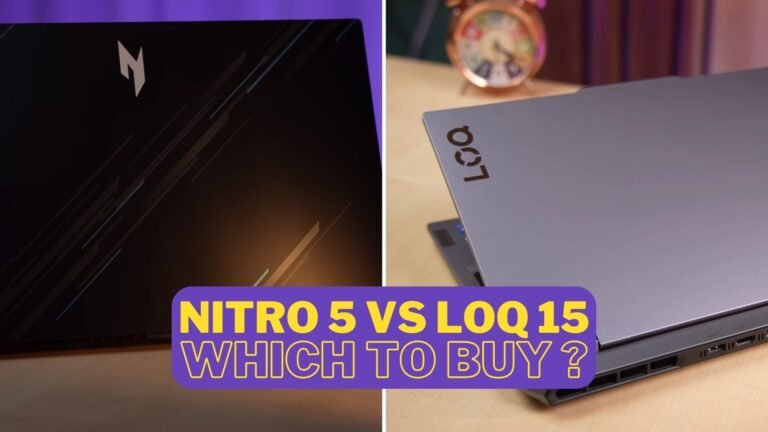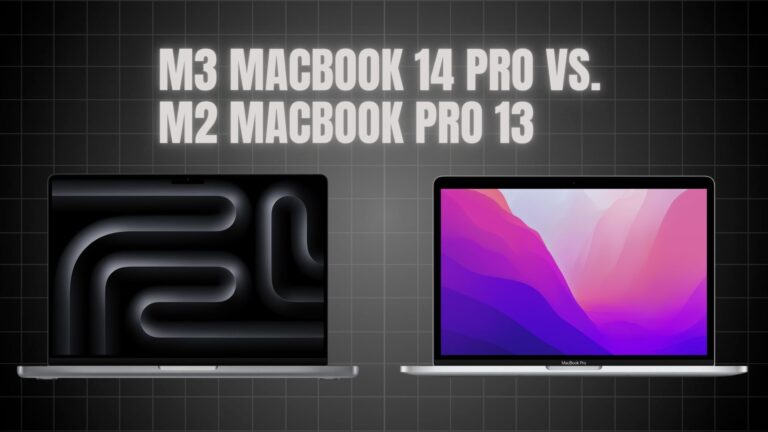Here is the detailed review of Lenovo Legion Y530 vs Lenovo Legion Y540 with comparison and the reason why one is better than other and vise versa. Have a look before buy one.
Comparison Table |
Lenovo Y530 |
Vs |
Lenovo Y540 |
| 1 TB HDD | Storage | 1 TB HDD |
| Intel Core i7 (8th Gen) Processor | Processor | Intel Core i7 (9th Gen) Processor |
| 15.6″ (39.62 cm) display, 1920 x 1080 px | Display | 15.6″ (39.62 cm) display, 1920 x 1080 px |
| 16 GB DDR4 RAM | Ram | 16 GB DDR4 RAM |
| Dual Speakers | Speakers | Stereo Speakers |
| Yes | Webcam | Yes |
| 2.2 GHz | Clockspeed | 2.6 GHz |
| 4 GB | Graphic Processor | 6 GB |
| LED | Display Type | LED |
| Standard Notebook Keyboard | Keyboard | Gaming Keyboard |
| 2.3 Kg | Weight | 2.31 Kg |
| 802.11 a/b/g/n/ac | Wireless Lan | 802.11 a/b/g/n/ac |
| 4.2 | Bluetooth | 4.2 |

Specifications
|
Lenovo Y530:
My unit has the 4 core Intel i5-8300H CPU, but it’s also available with the 6 core i7-8750H. I’ve got 16gb of memory running at DDR4-2666 in dual channel, but again this was customizable while ordering.
For the storage, it’s got a single M.2 slot with NVMe support, as well as a single 2.5-inch drive bay. I didn’t buy a 2.5-inch drive for my unit, and I’ve got a 256gb NVMe SSD installed.
For the graphics, there’s an Nvidia GTX 1060 6GB, although it’s also available with a 1050 or 1050 Ti. This powers the 15.6” 1080p IPS screen, again 3 options are available here, there are 250 nit and 300 nit 60Hz panels, and a 300 nit 144Hz panel, I’ve just got the 300 nits 60Hz panel here.
For network connectivity, there’s a gigabit ethernet port, 802.11ac WiFi and Bluetooth version 4.1.
Lenovo Y540:
My unit has the Intel i7-9750H CPU, 80 watts Nvidia GTX 1660 Ti graphics, and 16gb of memory running in dual channel, well I bought it with single-channel but installed dual-channel for testing.
For storage, I’ve got a 512GB NVMe M.2 SSD, and a 15.6” 1080p 60Hz screen, but again that’s just because I cheaped out when buying this, you can get 144Hz too.
For network connectivity, it’s got gigabit ethernet, 802.11ac WiFi and Bluetooth 5. There are a few different configurations available though.

Design |
Lenovo Y530:
The Y530 has a black grooved plastic lid with the Legion logo towards the side, while the interior is also all matte black with a smooth sort of rubberized texture. All edges and corners were nice and smooth, and overall build quality felt quite nice.
Lenovo Y540:
The lid is black plastic with a grooved finish, while the interior is matte black and some sort of rubberized material like Y530. All edges and corners were smooth, and the overall build quality felt good.

Weight & Dimensions |
Lenovo Y530:
The dimensions of the laptop are 36cm in width, 26.7cm in-depth, and about 2.5cm in height, so fairly average for a 15” machine.
The weight is listed as starting at 2.3KG on the Lenovo website, and in my unit with no hard drive installed I found it to weigh closer to 2.2KG. With the 170 watt power, brick and cables included the total weight increases to just under 2.9KG, but the 1050 and 1050 Ti models have smaller 135-watt bricks.
Lenovo Y540:
The dimensions of the laptop are 36cm in width, 26.7cm in-depth, and around 2.6cm thick at the highest point.
The starting weight is listed at 2.3kg on the Lenovo website, and mine was under this without the 2.5-inch drive bay populated. With the large 230-watt power brick and cables included this rises by about a kilo.

Display |
Lenovo Y530:
I’ve got a BOE 15.6” 1080p 60Hz IPS panel, although you’ve got the option of paying more for 144Hz too. There were no issues with viewing angles, colors were still perfectly clear for me on any angle, and the screen is capable of going all the way back. The bezels are also around 1cm thick based on my own measurements.
I’ve measured the current color gamut using the Spyder 5 Pro, and my results returned 94% of sRGB, 68% of NTSC and 73% of AdobeRGB, so pretty good results for a gaming laptop, but this will vary depending on which panel you end up selecting.
At 100% brightness I measured the panel at 329 nits in the center, and with an 810:1 contrast ratio, so fairly decent brightness and contrast levels for a gaming laptop.
I’ve taken a long exposure photo in a dark room as a worst-case backlight bleed test, and there was some bleed detected, mainly from the top right corner, although I never actually noticed it while playing games, but this will vary between laptops and panels.
There was an average amount of screen flex while intentionally moving it, but as a fairly thick plastic it did feel sturdy, and having the hinges out towards the far corners helped with stability.
It can also be easily opened up with one finger, demonstrating an even weight distribution as we’ve got the battery towards the front.
Lenovo Y540:
This smaller footprint allows for thinner screen bezels, which I measured at around 8mm on the sides. The 15.6” 1080p IPS screen has a matte finish, good viewing angles, though no G-Sync like the more expensive Y740.
We do however have the option of enabling or disabling hybrid mode through the Lenovo Vantage software. Enabling hybrid mode will give us better battery life with Nvidia Optimus, as this will use the Intel graphics outside of gaming while disabling hybrid mode will give us a better performance by bypassing Optimus, but at the expense of worse battery life outside of graphical intensive tasks.
I’ve measured the color gamut using the Spyder 5 Pro, and my results returned 93% of sRGB and 72% of AdobeRGB.
At 100% brightness in the center, I measured 293 nits with a 740:1 contrast ratio, so all aspects are a little lower compared to many other panels I’ve tested recently, though still fair and it looked fine. It’s worth remembering this is one of the two available 60Hz panels, so expect different results with the other or 144Hz. You’ve also got the option of pushing the screen back pretty much a full 180 degrees.
Backlight bleed wasn’t too bad here, just some minor imperfections that I wasn’t actually able to notice while viewing darker content, but this will vary between laptop and panel.
There was some screen flex despite it being thicker plastic, however, it felt sturdy with the hinges being out towards the far corners.
Absolutely no problems at all opening it up with one finger, it felt quite well balanced and no problems using it on my lap.

Touchpad & Keyboard |
Lenovo Y530:
It has 1.7mm of key travel and felt very nice to type with. It’s got white backlighting which can be adjusted between two levels of brightness or turned off completely by pressing the function key and space bar. No other colors here, unfortunately, for RGB lighting you’ll need to look at the Y730 instead.
There was some keyboard flex while pushing down hard, more towards the sides than the center but overall it seemed fairly solid considering the plastic build.
The touchpad was very smooth and great to use, maybe a little small though. The touchpad itself doesn’t click down, but the left and right-click buttons are very clicky.
Lenovo Y540:
The keyboard has white backlighting which can be adjusted between two different brightness levels or turned off by pressing the function key and spacebar shortcut, and the lighting even lights up all secondary key functions.
The Numpad is on the smaller side, but that sacrifice gets us larger than usual arrow keys for a laptop.
There was more flex while pushing down on the keyboard than I’d like, though this wasn’t an issue during normal use.
The touchpad has precision drivers, was smooth to the touch and worked pretty well considering it was on the smaller side. The touchpad itself does not click down, however, there are separate left and right-click buttons below it which make a very audible click sound when pressed.

Overall Build |
Lenovo Y530:
On the left there’s an air exhaust vent, USB 3.1 Type-A port, and 3.5mm audio combo jack, while the right has another USB 3.1 Type-A port, status LED and air exhaust vent.
Most of the I/O is found on the back, from left to right there’s a USB 3.1 Type-C port, although no mention of Thunderbolt here, Mini DisplayPort, USB 3.1 Type-A port, HDMI, Gigabit Ethernet, power input, and Kensington lock.
The front is just smooth plastic, with the two two-watt speakers found towards the left and right-hand sides. They sound pretty good for laptop speakers too, quite clear even at higher volumes though minimal bass.
On the back of the black grooved plastic lid there’s the Legion branding on the side, and the O lights up white while the laptop is powered on.
Underneath is pretty clean looking, and the rubber feet did a good job of preventing movement while in use and we’ve got the two air intake fans toward the back corners under the black metal mesh, though no dust filters here.
Lenovo Y540:
On the left from the back, there’s an air exhaust vent, USB 3.1 Gen1 Type-A port and 3.5mm audio combo jack.
On the right, there’s just another USB 3.1 Gen1 Type-A port and air exhaust vent.
The majority of the I/O is found on the back, from left to right we’ve got a USB Type-C port, no mention of Thunderbolt though, mini DisplayPort 1.4, third USB 3.1 Gen1 Type-A port, HDMI 2.0 output, gigabit ethernet, power input, and Kensington lock.
Above the rear I/O there are little images of what each is so when you’re standing over the machine plugging something in you can get a rough idea of where it should go. The front is just smooth plastic, and we can see the two speakers towards the left and right corners. I’d say the speakers were above average with a little bass present, while not too loud I thought they were loud enough, and the latency mon results looked alright.
The lid is pretty clean, just the Legion branding on the side with white lighting. This was not from the display’s backlight and it cannot be controlled.
Underneath there are some air intake vents towards the back, and the rubber feet did a decent job of reducing movement.

Battery |
Lenovo Y530:
Lenovo does specify up to 5 hours which seems reasonable and not the typical over-exaggeration you usually see.
While playing the Witcher 3 with medium settings and Nvidia’s battery boost set to 30 FPS the battery lasted for 1 hour and 24 minutes, but by the time it reached around 25% charge left the frame rate dropped in half as the battery was no longer able to provide enough power. Overall the battery seemed alright considering the specs.
Lenovo Y540:
While playing the Witcher 3 with medium settings and Nvidia’s battery boost set to 30 FPS the battery lasted for 1 hour and 18 minutes, however after the first 48 minutes with 25% charge remaining the frame rate dipped to 10 FPS and was hardly use any longer.
The 230-watt power brick that Lenovo includes with the Y540 was plenty for these specs, I was seeing some drain during my testing but it would stop at around the 95% mark which is pretty standard behavior. It’s worth noting the brick was quite large and heavy compared to most other 230w ones I’ve used.







